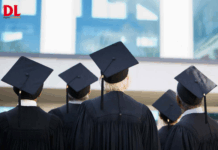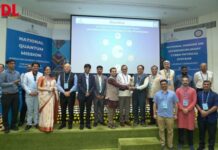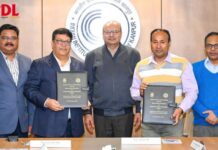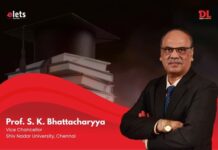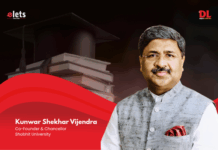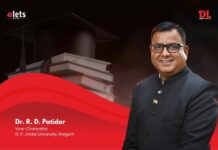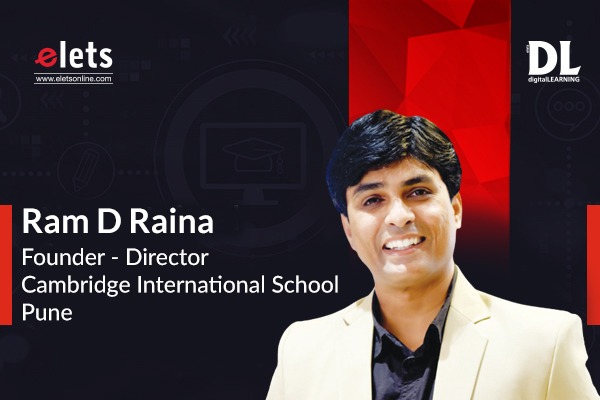
Explore, engage, envision, and exhibit – these four facets give different platforms to understand and learn. The advent of technology into the education space is very much aligned with these facets; it has opened the doors for educators to innovate and explore while teaching. To know more about the various other technological innovation in the education landscape, Ram D Raina, Founder – Director, Cambridge International School, Pune interacted with Sheeba Chauhan of Elets News Network. Edited excerpts:
How can Artificial Intelligence (AI) be used to expand the boundaries of the educational system? Could you tell us about the new technological initiatives your school has implemented?
Early work in artificial intelligence in education involved intelligent tutoring systems, but the field has broadened over the years to include all of the types of educational systems and interactions defined above, and has expanded to include several independent conferences and journals. The revolution in machine learning and data mining impacted artificial intelligence in education as well, with a significant shift around 2010— influenced by the emergence of a separate scientific conference, Educational Data Mining—toward much more use of this type of method. AIED systems now include a variety of functionality for identifying aspects of the learner as well as a variety of ways to interact with and respond to learners. Today, you will find AI everywhere, so it needs to be incorporated into the education system.
As a school management team, we have to think about the future demands in the fields of computers and lifestyle and also understand the necessity of AI learning for their future prospects.
What practices is your school adopting for the progress of the nation?
Very good question! My first responsibility as an Indian citizen and educator is to keep my country at the forefront of everything I do. We all know that we talk about this or that change or that we compare our country to others not only regarding culture but also of vision.
Here, we plan our educational system based on Gurukul concepts, which I have changed to “modern Gurkul traditional values.”
Now, we work on the student’s strengths and weaknesses in all aspects of their lives, such as knowing themselves, improving their skills, obtaining a value- and logically-based education, connecting with the 5 elements (water, fire, air, earth, and space), and connecting with themselves through these elements. All of the above-mentioned points are nurtured through the following concept, which is essential for building a better nation:
I thought commando training must be part of the curriculum everywhere because I have witnessed the education provided to children in nations other than ours. I must say, the people there are capable enough to stop robberies, burglaries, thefts, and street fights. When I asked a friend who lives in the United States how the people there were so brave that they wouldn’t even flinch to save someone from a mishap, he said, “They’re Americans.” He replied: “People here attend self-defense classes very soon, and one thing they learn at first is being fearless.” And they are somehow able to manage day-to-day threats themselves. That rang a bell in my head! Such training must be started at an early age, and children spend half the day in school. There is no better option than schools that include commando training as part of their curriculum. I chose to grab this opportunity and start the first wave at my school.
There are many things I want to say, but because it is all about the experience, I can’t put it into words, but what I have said is significant. We cannot fully rely on technology; we need to use our brains for all physical and mental activities.
The best programme to enroll depends on the needs and objectives of the individual. Skill development programmes concentrate on particular skill sets. What steps is your organization taking to expand the Skill Development Program?
Yes! Answering your question takes me to our ancient education system, where every learner used to choose their skills, like open skills like weapon making, trading, civil work, medicine, and the Vedas. Now, under the New Education Policy, kids need to select their skills for higher education, but the big question remains: how to choose? We at the Cambridge Group of Schools work on the reverse engineering concept, where we assist the kids on the basis of the VAK (Visual-Auditory-Kinaesthetic) theory; so that we come to know what is required of our students in school.
Best practices, which I have applied to fulfill the needs and objectives of skill development projects in our schools, are based on the environment, i.e., the infrastructure facilities. If you give appropriate, scientifically checked infra for music, art, robotics, science labs, art and craft, and sports equipment and grounds, then only we can say that we are ready for the change.
In our music rooms, for example, we have 50 professional keyboards, 100 professional and beginner-level guitars, a drum set, and four tablas, as well as the best teachers to help us achieve our goals. Same things for labs and sports, but now we are also talking about different skills like culinary arts, financial literacy, business development skills, speed math, digital skills, and foundation programmes to meet future challenges like IIT JEE, NEET, and other competitive exams.
What measures is your institution taking to give students a platform for experiential learning? What tactics are you going to use to improve learning and the student experience?
We work on the 4E concept: explore, engage, envision, and exhibit, which gives different platforms to understand and learn the concepts. Under the five elements of life, values play a very important role. And our value for students says, “MY TEAM LEADS.” This is well described when we look at the ant. Ants know that they can accomplish more by working together than by working alone. They set goals and worked together to achieve them. (Ants teach us to tune out distractions and focus on responsible behavior, sharing, and adaptation.)Never lose hope and always strive for excellence.
If you ask me about tactics, I will say, “Plan according to the resources and allow students and teachers to explore what is relevant to exhibit the ideas.” Freedom is another key, like freedom of expression, freedom of communication, and freedom of execution.
Reading habits, writing habits, drama skills, social skills, and other skills acquired through an industrial visit, a talk show with genius, and other experiences provide additional learning platforms.
How has technology changed throughout the years at your institution? What are the driving forces behind your institution’s rapid technological transformation?
If you really want to move faster with perfection and without human error, then technology plays an important role. When it comes to educational institutions, technology makes life easier for everyone. For example, with ERP and LMS, you can get every piece of information and even communicate with all parents and students with the click of a button. It would be extremely beneficial in the administration department, where reliance on humans would be eliminated.
A digital marketing plan, online exams and sessions save paper and time, and students can access information through different platforms. Here we need to understand that information flow is too much, and we keep storing it in our minds, which does not allow us to think differently, so here I advise you to choose the right path of information and act.
How are you planning to enhance the student experience of learning in the year 2023? What is the major segment that you will emphasise to work in the year ahead?
In the coming years, we are considering the upcoming 10 years of growth in India and world-wide science, based on which our focus will be on specific skills.
You become what you believe! With this quote, we’re moving forward, and our Believe system is already in place, as I mentioned in the answers above, and we’re working on it. All readers must understand that the Taj Mahal cannot be built in a year; it takes time, just as consistency in planning and execution is required in school education. Whatever we plan, we must give it time; we cannot change every year simply because the world is changing, and if you believe that we must change in response to the world, you are not an educator; you are an industrialist. What we need to do is develop a long-term strategy, assign tasks to children, and then wait for the results.


